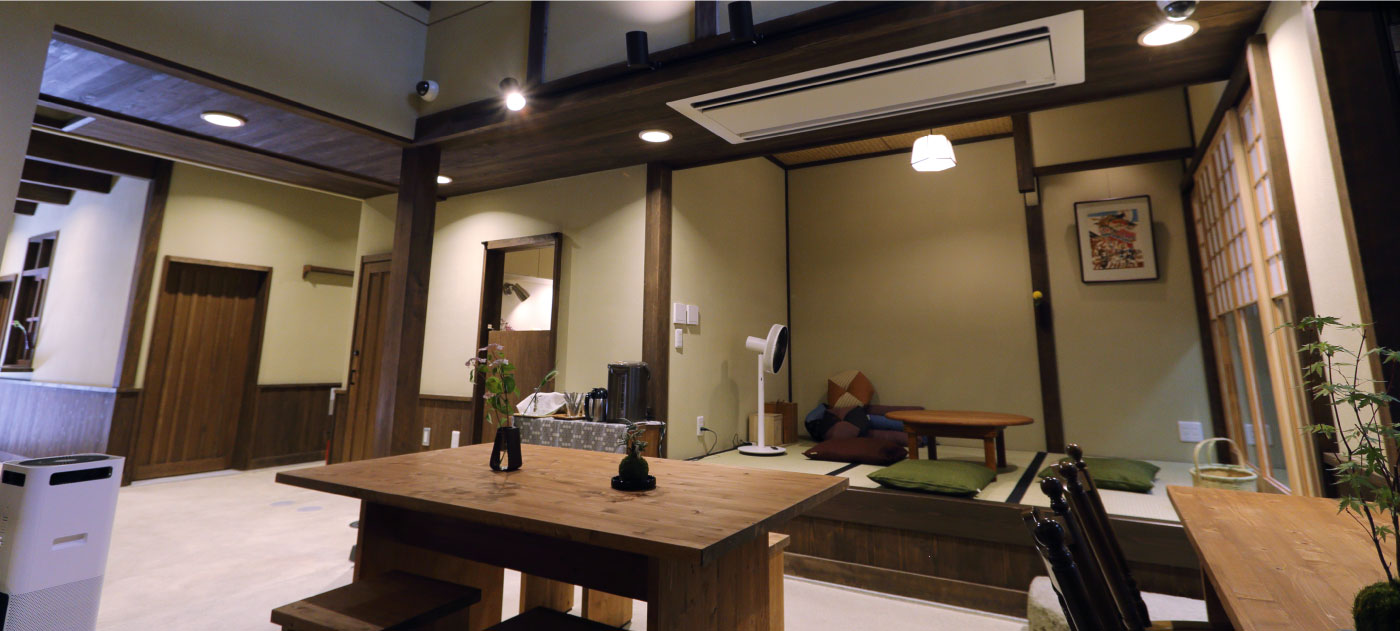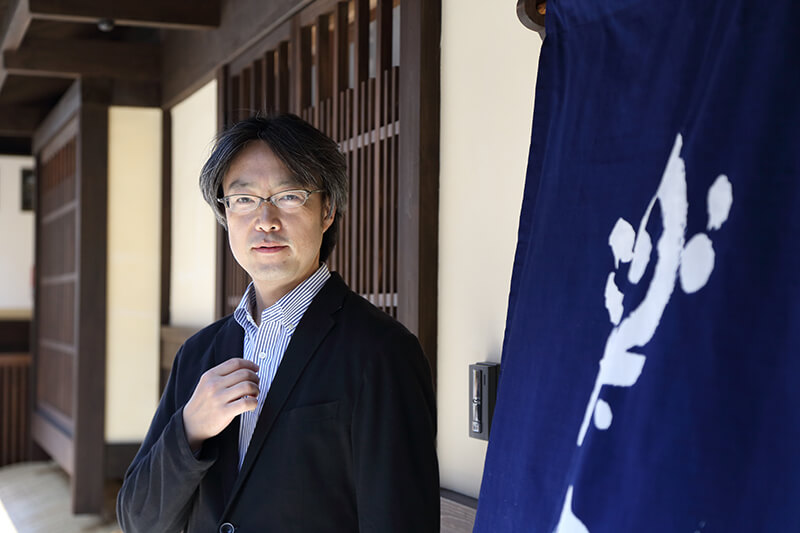Lobby
−The lobby is a place to relax while taking in the adorable and carefully pruned Japanese garden−

The lobby has a refreshingly open feel thanks to the “hibukuro”, and can be used as a free space throughout the day. It’s also used as a breakfast hall. We hope that the lobby offers our guests a place to relax with a view of the Japanese garden. We also have free tea and coffee available. Please also feel free to use the iMac computer for anything you may need to look up. The slightly raised, three-tatami space found in the lobby can also be used freely. The floor heating keeps the room warm and cozy even during the winter.
















